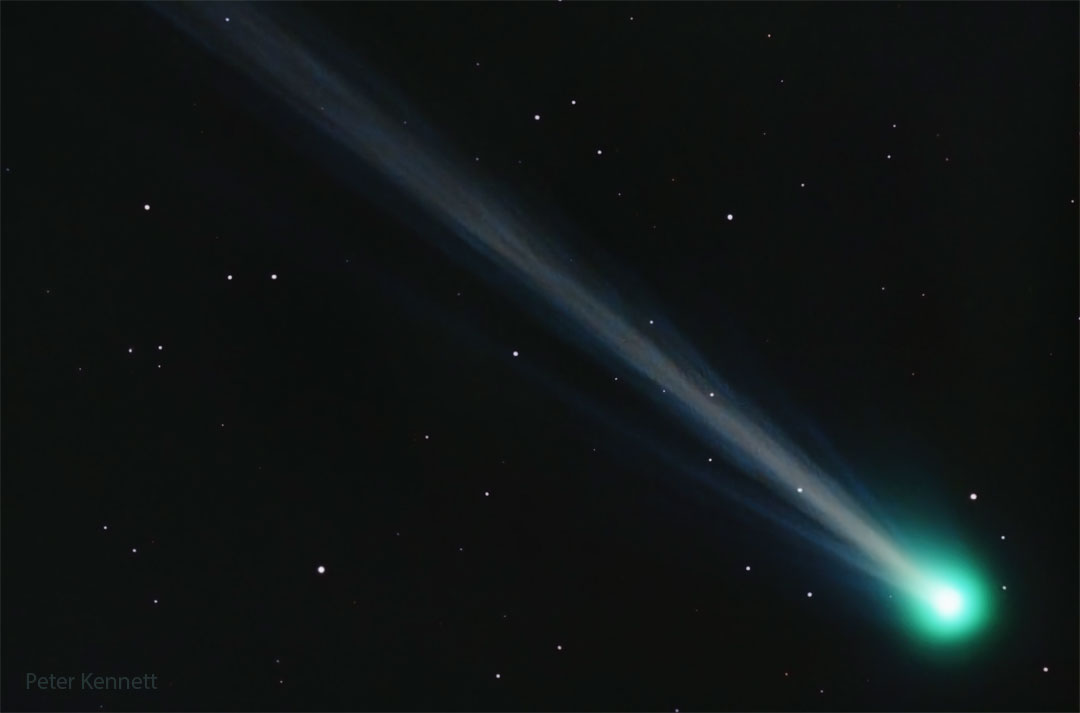西村彗星生长
(原标题: Comet Nishimura Grows)
2023-09-09
浏览次数: 277
西村彗星正在成长。更准确地说,C/2023 P1(西村)的彗尾在靠近太阳的过程中不断增长。这颗彗星是上个月才被发现的,当它在地球轨道内运行时,它的亮度已经接近肉眼。下周,这颗彗星将离地球最近,但再过一周,也就是9月17日,它将离太阳最近。据推测,西村彗星最后一次造访内太阳系时喷出的冰和尘埃可能造成了每年12月达到顶峰的西格玛水合座流星雨。如果是这样,那么这个流星雨可能会变得更加活跃,被新的彗星碎片刷新。图中,西村彗星是四天前在美国新墨西哥州的埃奇伍德拍摄的,它与太阳风的相互作用形成了一条长长的离子尾巴。在接下来的几个早晨,在日出之前,在你的东方地平线附近寻找这颗彗星,但在下周日落之后,在你的西方地平线附近寻找这颗彗星——因为它的彗发继续变亮,尾巴继续变长。图片库:提交给APOD的选定西村彗星图像
查看原文解释
Comet Nishimura is growing. More precisely, the tails C/2023 P1 (Nishimura) are growing as it nears the Sun. Discovered only last month, the comet is already near naked eye brightness as it now moves inside the Earth's orbit. The comet will be nearest the Earth next week, but nearest the Sun the week after -- on September 17. Speculation holds that expelled ice and dust from Comet Nishimura's last visit to the inner Solar System may have created the Sigma Hydrids meteor shower which peaks yearly in December. If so, then this meteor shower may become more active, refreshed with new comet debris. Pictured, Comet Nishimura was captured from Edgewood, New Mexico, USA four nights ago, showing a long ion tail structured by interactions with the Sun's wind. Look for this comet near your eastern horizon just before sunrise for the next few mornings, but very near your western horizon just after sunset next week -- as its coma continues to brighten and its tails continue to grow. Gallery: Selected Comet Nishimura images submitted to APOD
© Peter Kennett
